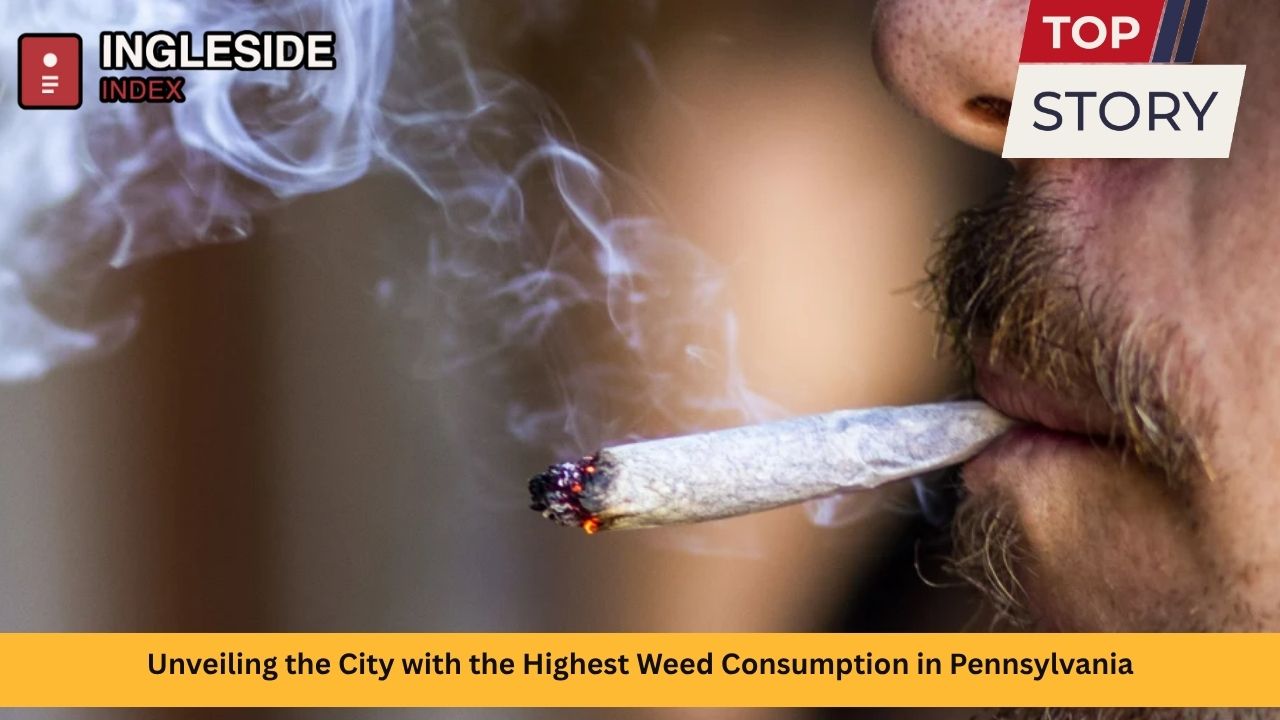Pennsylvania, a state at the epicenter of historic transformation and modern urban vibrance, has seen a remarkable evolution in the cultural and legal landscapes surrounding marijuana. While recreational cannabis remains illegal at the state level, decriminalization in several major cities and the advent of medical marijuana regulations have shifted both attitudes and behaviors. Among these urban centers, one city consistently stands out for both its sheer volume of cannabis consumption and its influential role in the broader marijuana conversation. The spotlight shines squarely on Philadelphia—the City of Brotherly Love.
The Changing Landscape of Marijuana in Pennsylvania
Marijuana Laws and Policy Shifts
Over recent years, Pennsylvania has embarked on a journey of substantive change with regards to cannabis. Medical marijuana was legalized in 2016, leading to more than one million residents registering as medical marijuana patients. Despite the official stance against recreational use, the state’s urban centers have increasingly taken a progressive approach. Many cities, including Philadelphia, Pittsburgh, Harrisburg, and Allentown, have moved to decriminalize possession of small amounts, reducing legal risks and changing the public’s perception of cannabis use.
The Impact of Decriminalization
This localized decriminalization effort has effectively lowered the penalties associated with cannabis possession. For instance, in Philadelphia, possessing less than 30 grams of marijuana typically results in a $25 fine—far from the criminal charges that once loomed over minor infractions. These legal adaptations, coupled with medical accessibility, have paved the way for a substantial uptick in consumption patterns, particularly in urban hubs.
Philadelphia—The Epicenter of Weed Consumption
Statistical Findings
Recent studies and global cannabis analyses place Philadelphia among the world’s top cities for marijuana consumption. Annual consumption in Philadelphia is measured at over 10 metric tons per year, placing it not only at the top in Pennsylvania but among the highest globally. On a per capita basis, each Philadelphian consumes nearly 7 grams annually—an impressive figure that rivals major metropolitan centers worldwide.
In comparative studies measuring THC concentrations in wastewater—a reliable scientific method for estimating community drug use—Philadelphia outpaced all other Pennsylvania cities by a wide margin. Average THC concentrations in city wastewater are considerably higher than those in cities like Pittsburgh or Allentown, which trail behind Philadelphia in statewide rankings.
Price and Market Dynamics
The average retail price for a gram of cannabis in Philadelphia hovers just above $11, positioning it competitively in the global market. Despite the lack of legal recreational sales, the city boasts a robust black market where demand consistently outstrips legal supply. Delivery services and informal networks efficiently fill this gap, responding to the needs of a diverse and ever-growing consumer base.
Exploring Other Pennsylvania Cities
Pittsburgh: Second in Consumption
Pittsburgh, often cited as Philadelphia’s western counterpart, records the second-highest rates of weed consumption in Pennsylvania. THC detections in wastewater are notable, though considerably lower than in Philadelphia. Decriminalization has also played a role in reducing penalties and normalizing use, but the volume still lags behind Philadelphia’s massive footprint.
Allentown and Other Urban Centers
Allentown, another significant city, rounds out the top three in terms of statewide marijuana use. Other cities—Erie, Harrisburg, York, and State College—have also seen marked increases. Each of these cities has adopted some form of decriminalization or progressive enforcement approach, further fueling the gradual uptake, especially among young adults and those seeking alternative approaches to wellness, recreation, and stress relief.
Factors Behind Philadelphia’s High Consumption
Size and Demographics
Population plays a vital role in Philadelphia’s ranking. With its status as the largest city in Pennsylvania—boasting a population exceeding 1.5 million—Philadelphia possesses the critical mass necessary for high absolute numbers. However, the story runs deeper than mere scale.
Cultural Diversity and Social Tolerance
Philadelphia’s rich cultural mosaic supports a variety of lifestyles and attitudes, including a longstanding tolerance toward cannabis. The city’s progressive political climate, vibrant arts scene, and a college-aged population all contribute to normalized cannabis use. Events, music festivals, and cultural gatherings often feature a laid-back attitude toward recreational substances, reinforcing cannabis as a staple of social life.
Legal Policies and Law Enforcement
Since 2014, Philadelphia police have deprioritized low-level marijuana offenses, choosing to focus resources elsewhere. Individuals caught with small amounts face civil, not criminal, penalties, reducing the stigma of use. The city’s District Attorney has further relaxed prosecution for minor cannabis infractions, promoting an atmosphere where users can partake with less fear of legal repercussions.
Accessibility and Supply Channels
Despite the absence of legalized recreational dispensaries, marijuana is widely accessible in Philadelphia. Proximity to New Jersey and New York—states that have legalized recreational cannabis—means that products and cultural attitudes flow easily across state lines. Philadelphia’s black market is robust, with competitive pricing and a range of products rivaling those found in legal markets.
Economic and Social Influences
Socioeconomic challenges also play a role in consumption trends. Philadelphia, like many large U.S. cities, grapples with persistent poverty, unemployment, and inequality. In such contexts, marijuana is often used as a coping tool—relaxation, creative inspiration, and stress relief are commonly cited motivations among users. The COVID-19 pandemic amplified these trends, as more residents turned to cannabis to handle anxiety, isolation, and uncertainty.
How Philadelphia Compares Nationally and Globally
Philadelphia holds its own not just within Pennsylvania, but on the national and even global stage. It ranks among the top 15 marijuana-consuming cities worldwide, according to comprehensive studies of urban cannabis use. This elite group also includes metropolises such as New York, Los Angeles, Chicago, Sydney, and Rome.
A Glance at National Context
Nationally, marijuana consumption correlates strongly with large population centers, progressive urban policies, and shifting cultural norms. In Philadelphia, each of these elements intersects, creating a perfect storm for high cannabis demand.
Philadelphia vs. Regional Neighbors
Competitively, Philadelphia’s annual weed consumption rivals cities in states where recreational cannabis is fully legal. Despite lacking a retail industry, Philadelphia’s use is fueled by demand, progressive enforcement, and easy access—factors that help the city punch above its weight class.
Economic Implications for Pennsylvania
The Untapped Revenue Stream
The economic stakes are immense. Projections suggest that if Pennsylvania were to legalize recreational marijuana, the state could pull in between $400 million and $600 million annually in cannabis-related taxes. Legalization could usher in 20,000 to 40,000 new jobs across the cultivation, retail, and logistics sectors, transforming the social and economic fabric of cities like Philadelphia, Pittsburgh, and Allentown.
The Cost of Waiting
Each year Pennsylvania delays recreational legalization, significant revenue flows instead to neighboring states with dispensaries. Estimates show that Pennsylvanians spend hundreds of millions at out-of-state shops in New Jersey and New York. Philadelphia, being geographically close to these states, is particularly affected—residents frequently cross state lines to partake legally, taking their tax dollars elsewhere.
Social Dynamics and Evolving Attitudes
Youth and College Communities
Philadelphia’s reputation as a college town plays a pivotal role in shaping consumption patterns. Major institutions like the University of Pennsylvania, Temple University, Drexel University, and countless smaller colleges infuse the city with a steady stream of young adults. This cohort, nationally recognized as trendsetters in cannabis use, drives both cultural acceptance and overall consumption rates.
Shifting Perceptions
Public attitudes toward weed have softened dramatically. Recent surveys show increasing support for legalization and a belief in the therapeutic and recreational benefits of cannabis. As more towns and cities follow Philadelphia’s lead in prioritizing decriminalization, barriers to open use further diminish.
Health, Justice, and Ongoing Challenges
Medical Marijuana’s Expanding Influence
Since legalization, medical marijuana dispensaries have proliferated across the state, providing patients with structured, regulated access to cannabis. Prices have fallen as competition increased, and the stigma surrounding cannabis as a medical treatment has faded considerably in urban centers like Philadelphia.
Continued Justice Disparities
However, not all progress is equal. Racial disparities persist in cannabis-related arrests, even as overall arrest numbers drop. Black Pennsylvanians remain more likely than White residents to face legal consequences, spotlighting the need for comprehensive justice reform alongside legislative change.
Responsible Use and Public Education
Efforts to educate the public on responsible use, especially among young people and first-time users, are intensifying. Community organizations, dispensaries, and advocacy groups are committed to providing accurate information about risks, benefits, and safe consumption practices.
The Future of Cannabis in Philadelphia and Beyond
Legislative Momentum Builds
The tide is turning. Pennsylvania lawmakers have introduced multiple bills to legalize recreational cannabis. Governor Josh Shapiro has publicly endorsed legalization efforts, and broad support exists among the general populace. If these initiatives succeed, cities like Philadelphia are poised for even greater shifts in consumption patterns, market growth, and cultural integration.
Economic Growth and Social Equity Opportunities
Legalization could fuel economic revitalization, especially for communities impacted by historic disparities in cannabis enforcement. Plans for inclusive industry practices aim to foster minority ownership, create jobs in vulnerable neighborhoods, and reinvest tax income in public services.
Philadelphia as a Model
Philadelphia’s experience offers a blueprint for other cities in transition. Harm reduction, sensible policing, and robust community dialogue have helped manage the challenges of high-consumption environments. As legalization looms on the horizon statewide, the lessons learned in Philadelphia will inform policy, enforcement, and education across Pennsylvania.
Conclusion
Philadelphia’s rise as the undisputed leader in weed consumption throughout Pennsylvania is shaped by a confluence of size, culture, policy, and socioeconomic realities. Its story underscores the broader transformation sweeping the Keystone State—a transformation that blends changing laws, evolving public opinion, and pressing economic opportunity.
While cannabis remains illegal for recreational use at the state level, the winds of change blow strong in Pennsylvania’s largest city. Philadelphia stands as a symbol of progress, complexity, and possibility—a city where the future of cannabis is being written, one puff at a time. As the state debates full legalization, a closer look at Philadelphia offers not just insight, but a glimpse of what could soon become the new normal across all of Pennsylvania’s urban heartlands.




